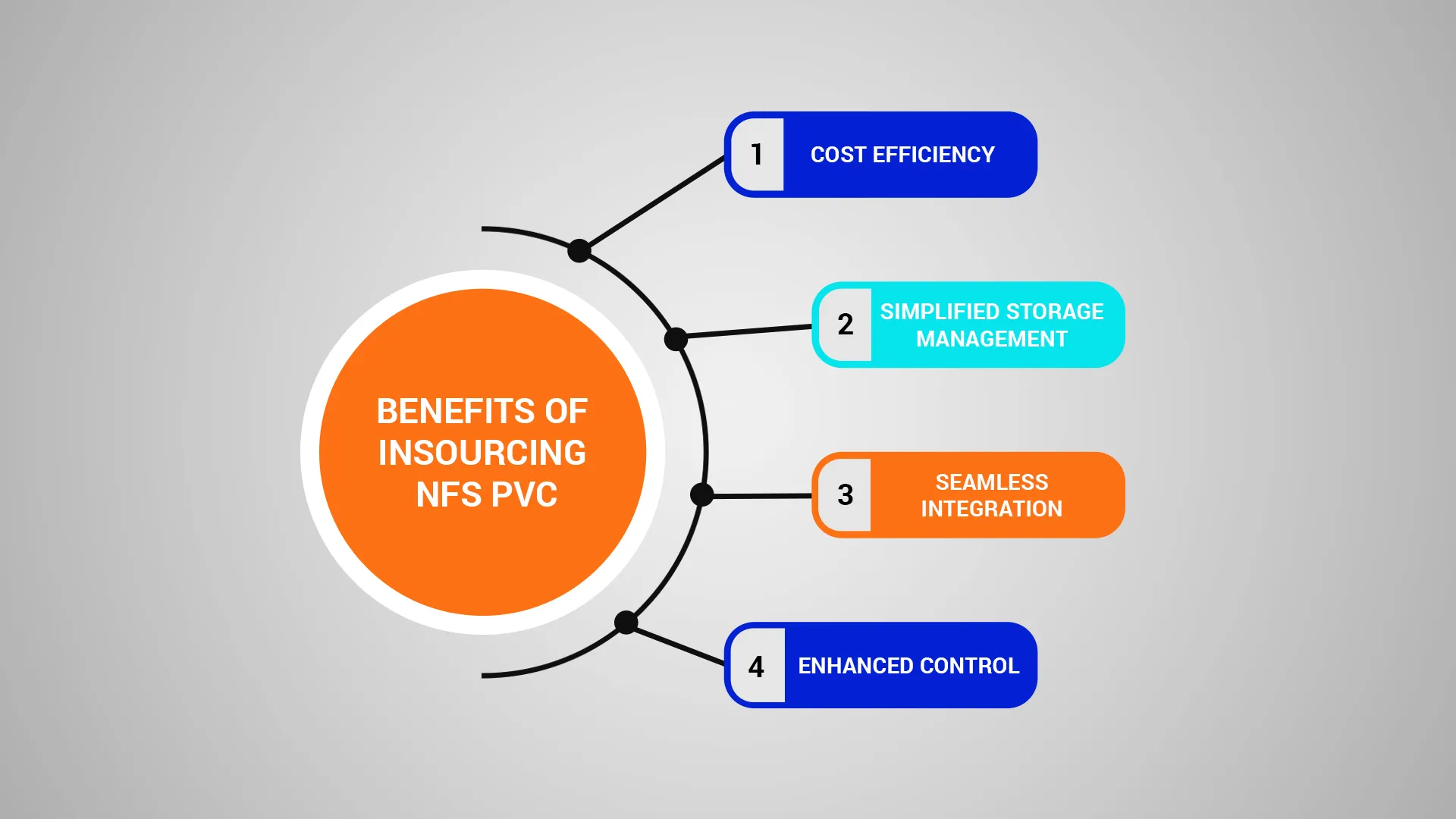Insourcing NFS PVCs into Kubernetes and Saying Goodbye to External Solutions
Kubes are incredibly dynamic. Therefore, handling workloads with ReadWriteMany requirements becomes complicated. Shared storage is necessary for applications demanding concurrent read and write access from multiple pods.
Typically, you could utilize an external storage solution. However, by doing so, you invite additional complexity and massive bills.
But Is there a better approach?
Let’s investigate a novel idea of insourcing NFS PVCs. This idea’s crux is creating shared storage within your Kubernetes cluster. Stay tuned for some Kube basics, a mini insourcing guide, and some best practices.
A Walk Down Kube Lane
A Network File System (NFS) is a distributed file system protocol with a client-server model. Clients (users) can interact with files in a shared directory – like they were stored locally.
A Persistent Volume Claim (PVC) is a storage request by a user. Similar to pods on a Kube network, PVCs also consume PVC resources. You can mount a PVC via various access modes:
- ReadWriteOnce
- ReadOnlyMany
- ReadWriteMany
- ReadWriteOncePod
Why is ReadWriteMany Special?
ReadWriteMany (RWX) is a unique feature that enables multiple pods to read from and write to a shared storage volume concurrently. RWX is your go-to if specific applications or cloud computing workloads require data consistency and real-time data updates. For instance, Content Management Systems (CMS) like WordPress heavily rely on RWX to serve web pages and store media files.
RWX is vital for high availability and failover scenarios. Additionally, ReadWriteMany enables uninterrupted access in the case of an unprecedented pod failure.
Challenges of Implementing NFS PVCs with an External Storage
Why even consider the idea of insourcing? Here’s why:
- Storage provider dependency: Issues or outages with your vendor will impact your SLAs.
- Mounting Costs: External storage providers like GCP Filestore have complicated usage-based pricing models. Storage capacity fees, network egress charges, and several more are all elevating your bill.
- Vendor Lock-in: Reduce dependency as much as possible. Vendor lock-ins affect your flexibility and customization.
- Operational Complexity: Your Day 2 responsibilities soar. You must manage, configure, and monitor the external storage solution.
Are you looking to outsource your DevOps? Reduce your go-to-market cycles by collaborating with us.
Exploring the Insourcing of NFS PVCs
By insourcing, you build an independent NFS storage infrastructure in-house. As a result, you manage your own NFS servers to fulfill RWX PVC requests.
Curious to learn more? Here’s a broad framework for insourcing NFS PVC in Kubernetes
- Set up an appropriate storage class for your NFS.
- Create a PV corresponding to your storage class in the YAML template file.
- Create a PVC with the same properties (storage class, access mode, and required storage) as your PV.
- Set up a pod, and mount the PVC by configuring it as a volume in your pod.
Note: In the YAML template, you would find a section called “volumes.” This is where you need to define the PVC as a volume. Here’s a sample code snippet:
volumes :
– name: D3V-volume
persistentVolumeClaim:
claimName: D3V-pvc
Breaking down the code: The PVC “D3V-pvc” is configured as the volume “D3V-volume.” This code exposes the PVC storage to the pod.
Finally, specify the mount path inside your Pod. You would need to modify the volumeMounts section inside the container definition.
containers :
– name: D3V-container
image: D3V-image
volumeMounts:
– name: D3V-volume
mountPath: /path/to/mount
Breaking down the code: The applications running inside your container at the specified mountPath can now access the PVC storage.
Contact our expert cloud consultants to chart a personalized NFS PVC insourcing strategy.
You gain supreme control over the storage infrastructure by insourcing the NFS PVCs. As a result, you can reap several benefits.
- Cost Efficiency: Insourcing helps you leverage existing infrastructure. Consequently, you employ a cost-effective approach to resource allocation. .
- Simplified Storage Management: You can reduce dependencies on third-party NAS solutions like Filestore. .
- Seamless Integration: Insourcing NFS PVCs integrates well with the native Kubernetes ecosystem. As a result, you will experience smooth interoperability between applications.
- Enhanced Control: With insourcing, you can exercise tight control over caching policies, configurations, and performance optimizations.

Best Practices for Managing Insourced NFS PVCs
Our cloud experts recommend the following operations:
- Planning and Capacity Management: Proactively plan for future expansion to avoid network and disk I/O bottlenecks.
- Storage Design: Optimize your workload management. Consider factors like performance, fault tolerance, and redundancy.
- Security: Implement security measures like firewalls, access control, and encryption.
- Backup & Disaster Recovery: Regularly back up NFS PVCs. Additionally, test your restoration process.
- Monitoring: Leverage tools Prometheus and Grafana to monitor your workloads.
- Knowledge Management: Maintain updated documentation of your storage architecture, configurations and internal processes. Create process flows and a RACI matrix for day-2 operations.
Anxious about the complexities involved? Sign up for a free consultation to discuss your pain points
Wrapping Up
In a bid to cut costs, consider insourcing NFS PVCs into your own Kubernetes instance. The advantages include improved cost efficiency, greater control, and simplified storage management. While insourcing, pay extra attention to the day-2 management operations to ensure smooth sailing. We at D3V are on a mission to cloud-empower the world. Our versed cloud consultants and DevOps specialists strive to simplify your cloud expedition. Reach out today for a free consultation.
